Types of Opal
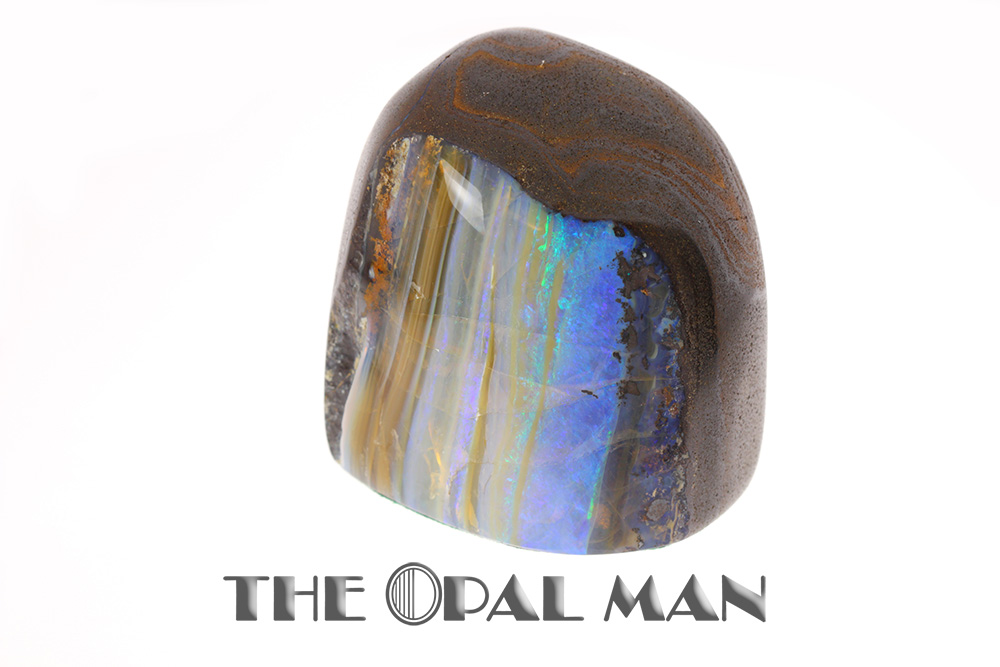
About Genuine Opal
Many Colors, Shapes, and Types!
What is genuine opal? These are stones that have been mined from the Earth, they are not man-made. We take natural rough from the ground, to be cut, polished, and trimmed. The beauty of opal, is that each one is unique. Some opals may appear to be similar, but when it comes to every flash of color within, they will vary. We carry a vast selection of genuine opal, including: Australian black, crystal, white, boulder, and specimen opals. You will discover that we also have Australian opal doublets, which are selectively cut and made from crystal opal (find out more below). In addition to the many types of Australian opals, you can find authentic Mexican and Ethiopian opals at our store.
The specimen presented here is Boulder opal from the Queensland area of Australia. Its intriguing striated pattern was found within the host stone and then cut and polished into the finished piece you see here.
To learn about opal facts, visit our Opal Myths page.
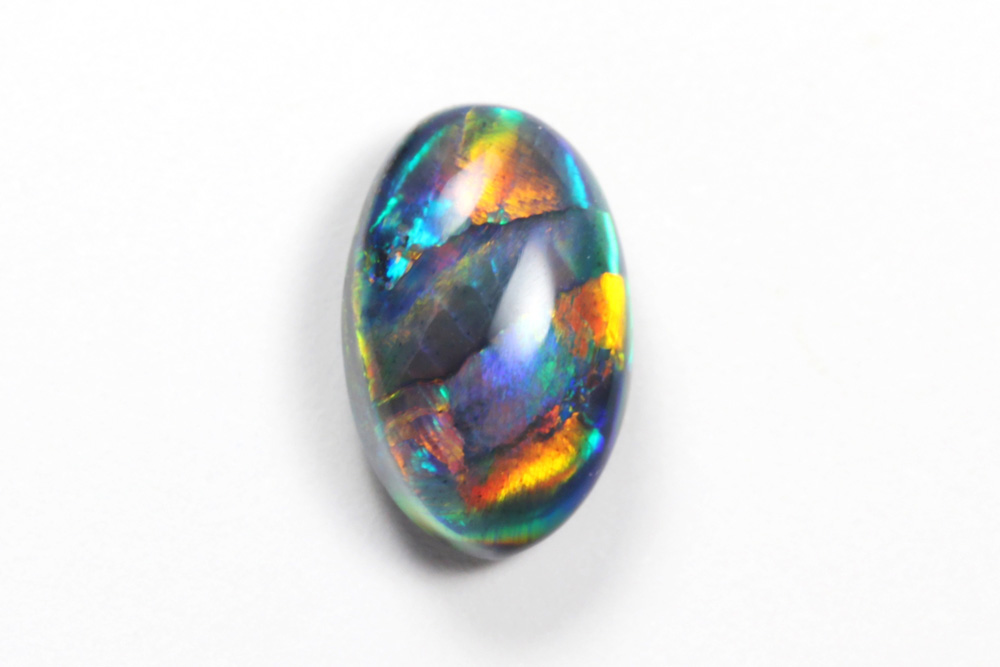
Australian Black Opal
Australian Black Opal is one of the most well-known and valuable types of opal. While some people mistakenly expect black opals to be very dark or black, the name actually comes from the color of the host stone in which the opal formed. This host material that appears in a range of tones from gray to black, is naturally occurring and can often be seen on the back of the polished black opal. The stone cutter did not remove the dark, opaque background because it has the effect of enriching and saturating color, and it increases the value of the stone.
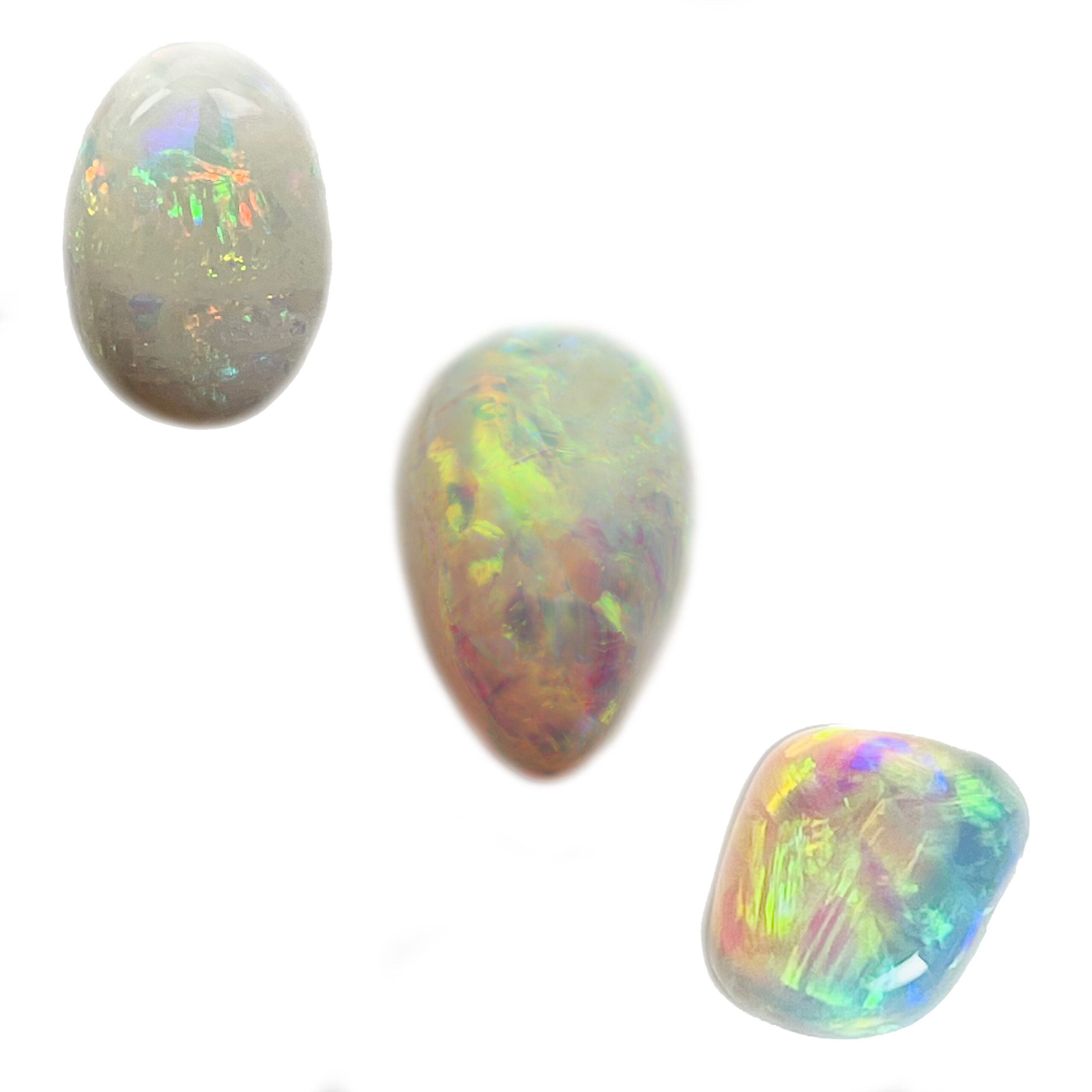
Australian White, Light, and Crystal Opal
White opals have a white base, and the color play and patterns present themselves in this white opal base. Opals in this category can host a wide variety of colors and light play patterns. White opals are the most common type of opal because they were marketed extensively in the early 20th century. White opals are often the most difficult to photograph because their colors can be so pastel and delicate. .
In a crystal opal, on the other hand, the color play presents itself against a transparent opal base which light can pass through.
Light opal is right in between the white and crystal qualities as it has a slight translucency to it but just enough pale base to help see the colors more easily.
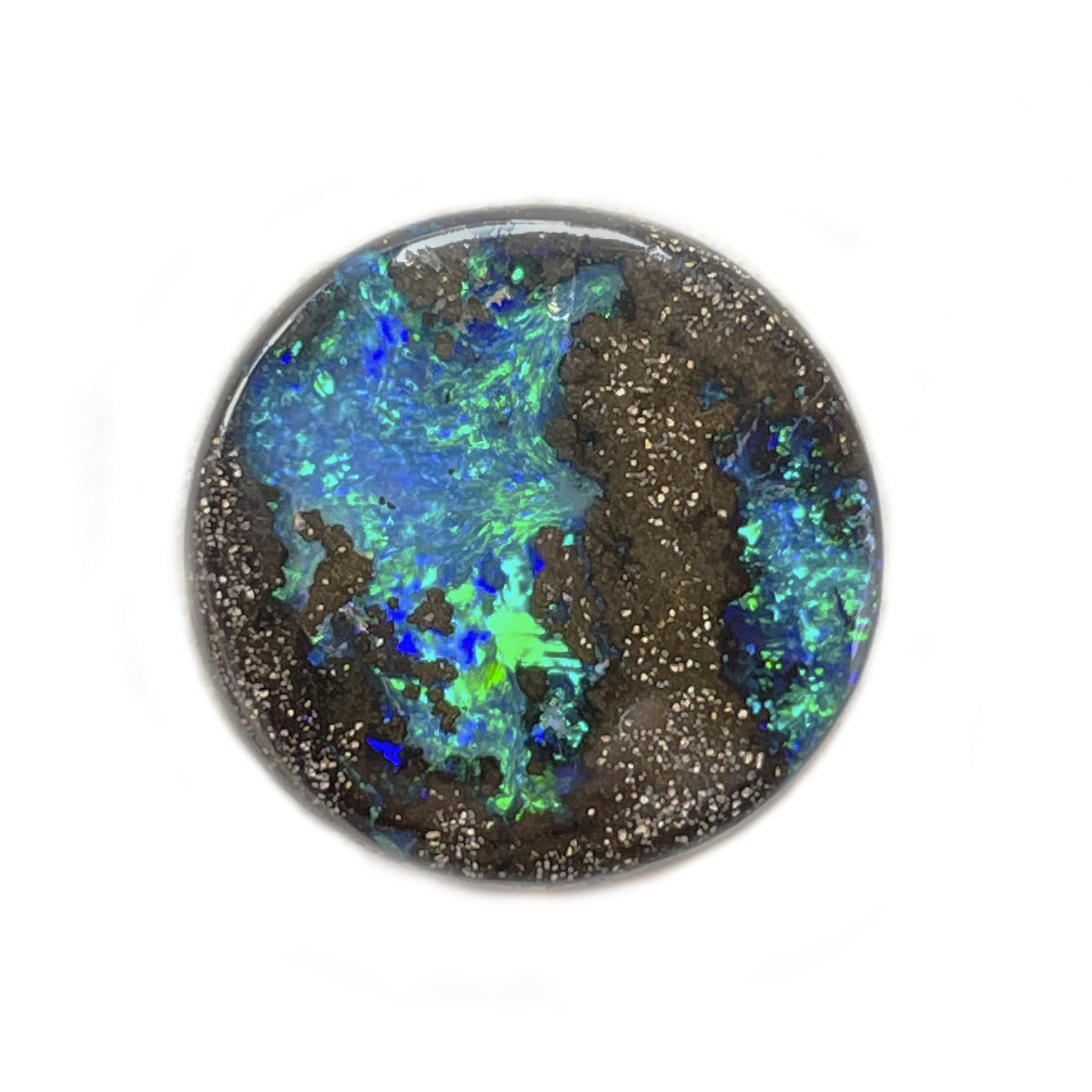
Australian Boulder Matrix Opal
Boulder opal is found in select areas of Queensland, Australia.
The term boulder comes from the ironstone on which the layer of opal is formed (known as the host stone), often giving the opal an uneven surface that further enhances the array of colors. The opal is cut and polished with the host stone still attached (e.g. ironstone). Boulder opal is the toughest type of opal out there, ranging closer to the 6 - 6.5 region on the mohs hardness scale. Due to the better durability of boulder, it is what we recommend most for men's jewelry, along with Koroit boulder opal (scroll down to learn about this type).
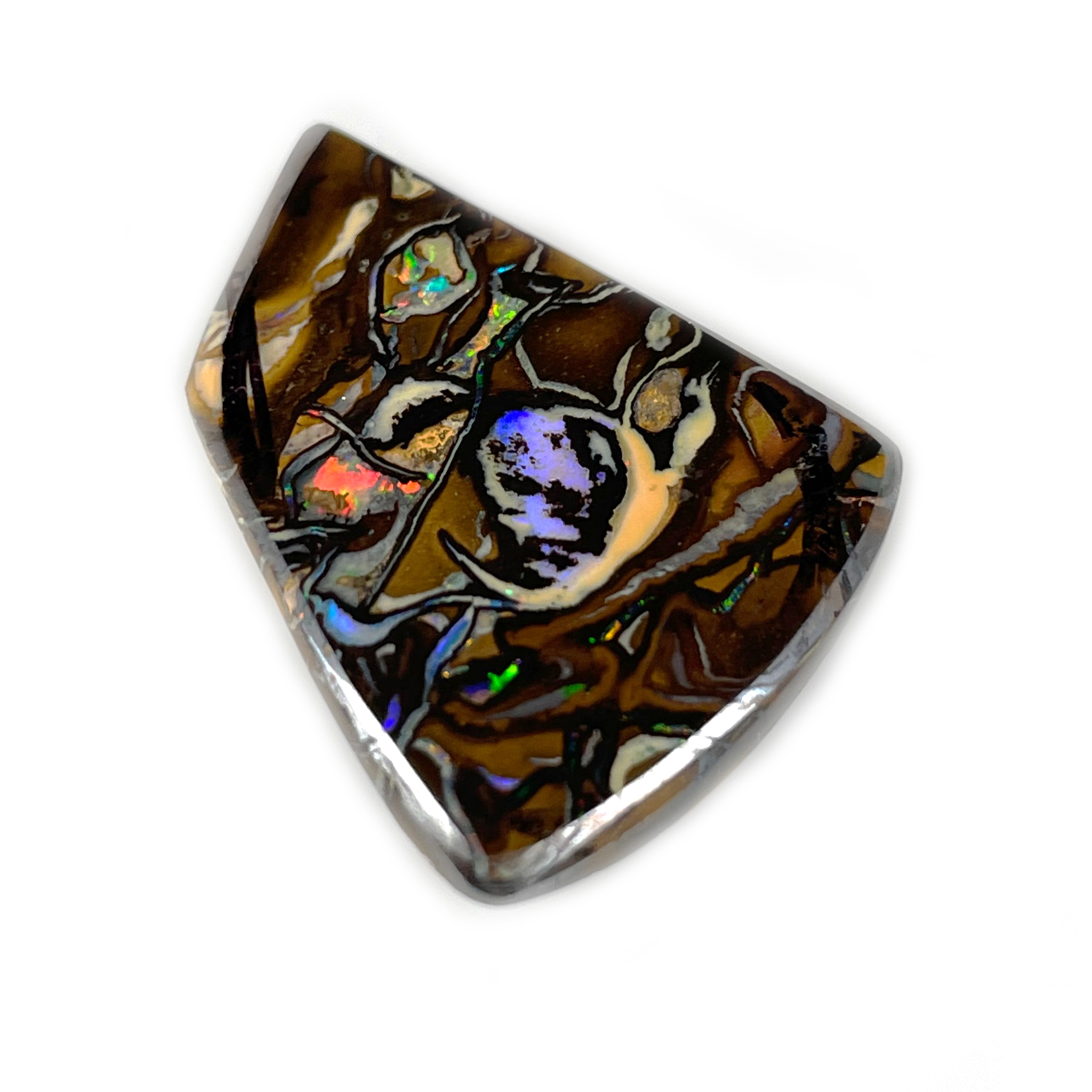
Koroit Boulder Opal
Koroit boulder opals are found exclusively in the opal fields of Koroit, Australia. These durable stones are among the hardest opal material of all boulder opals. Unique, artistic design and beautiful patterns of vibrant color are characteristic of Koroit boulder opals. They make stunning pendants and rings, and they stand out in a gem collection too!
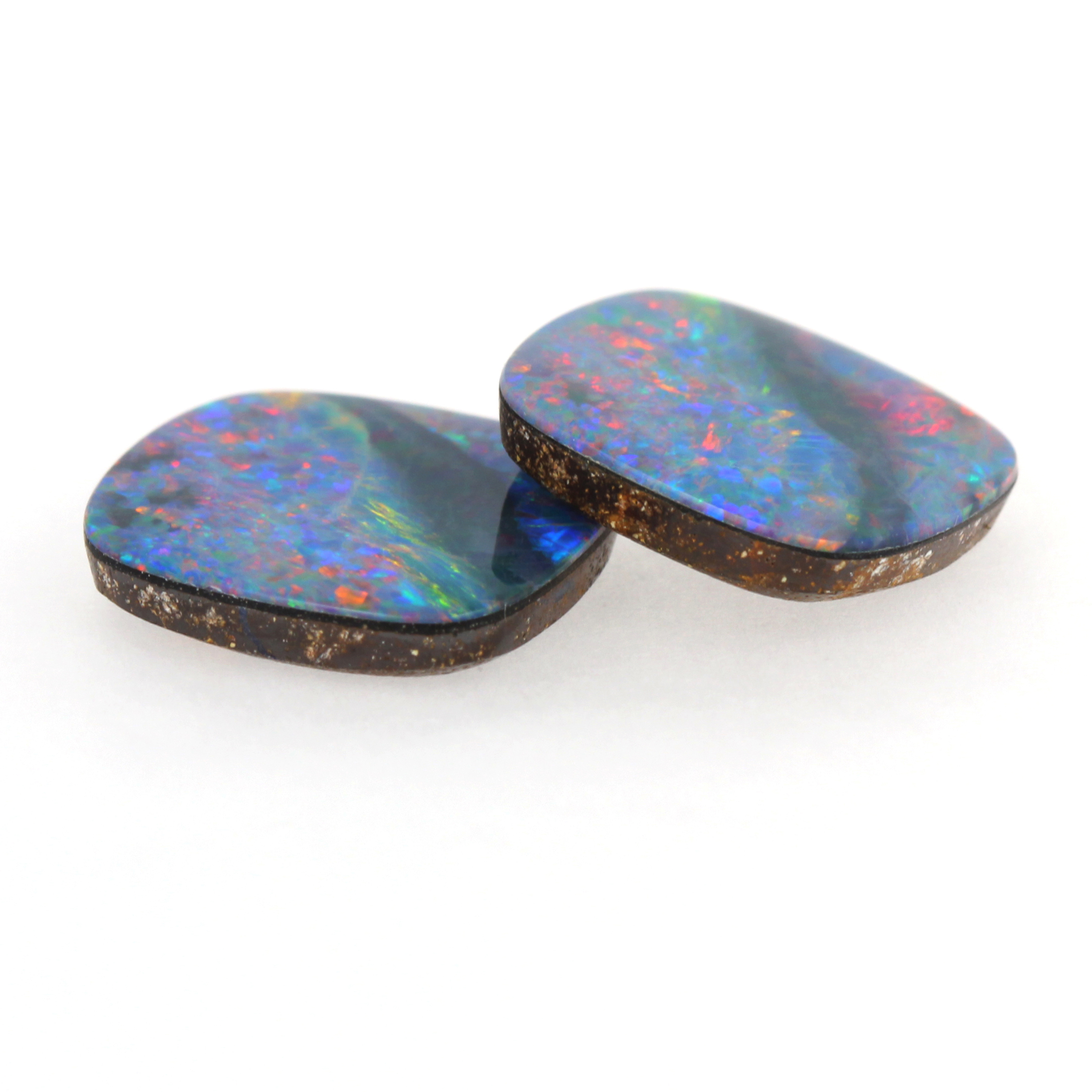
Doublet Opals
Doublet opals can have a wide range of striking, beautiful color play and flash. A doublet opal is composed of two layers, a top layer of real, natural opal bonded to a bottom layer of darker stone. Natural Australian ironstone or black onyx is often used for this second layer. The addition of the darker material can give the visual effect of deeper, saturated colors, like a black opal. The Opal Man makes doublet opals here in the shop.
In the picture shown here, the two layers of the doublet are distinctly visible.

Triplet Opals
Triplet opals, just like doublet opals, can have a wide range of striking, beautiful color play and flash. They are comprised of three layers; hence the "tri" in the title. The top layer of a triplet is a clear quartz cap; the middle layer is real, natural opal, and the bottom layer is darker stone, usually onyx or ironstone. The quartz cap helps to protect the opal because it is higher on the Mohs hardness scale, it also magnifies the opal, giving it even more depth.
Pictured to the left are a few examples of triplets with beautiful color and flash.
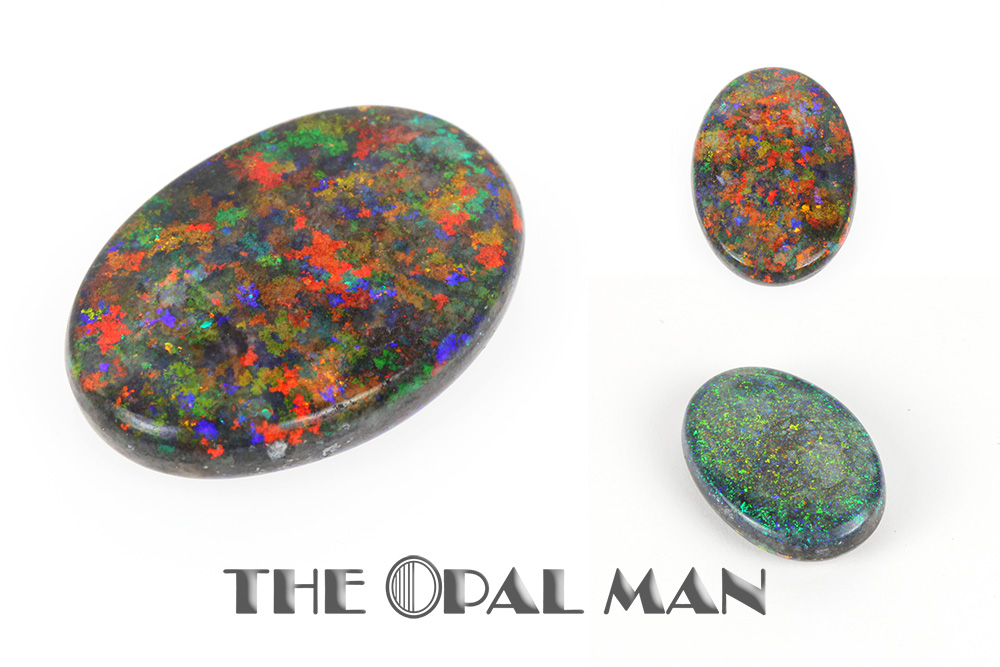
Opal with Treated Matrix
Some opal forms in or on a porous, white parent stone, called the matrix. This type of lighter matrix stone, often found in Andamooka, Australia, can be treated so that it looks darker. Treating the matrix in this way can make the colors of the opal material look more vibrant and saturated than it would look against a white matrix. It is important to note that treating the opal matrix does not alter Australian opal, just the parent matrix. At The Opal Man, opals are always identified, so customers know what types of opal they are seeing.
The opal pictured here is 18.47ct and measures at roughly 22.5mm x 14.0mm x 2.5 mm. There are two completely different colors and patterns on both sides of this brilliant stone!
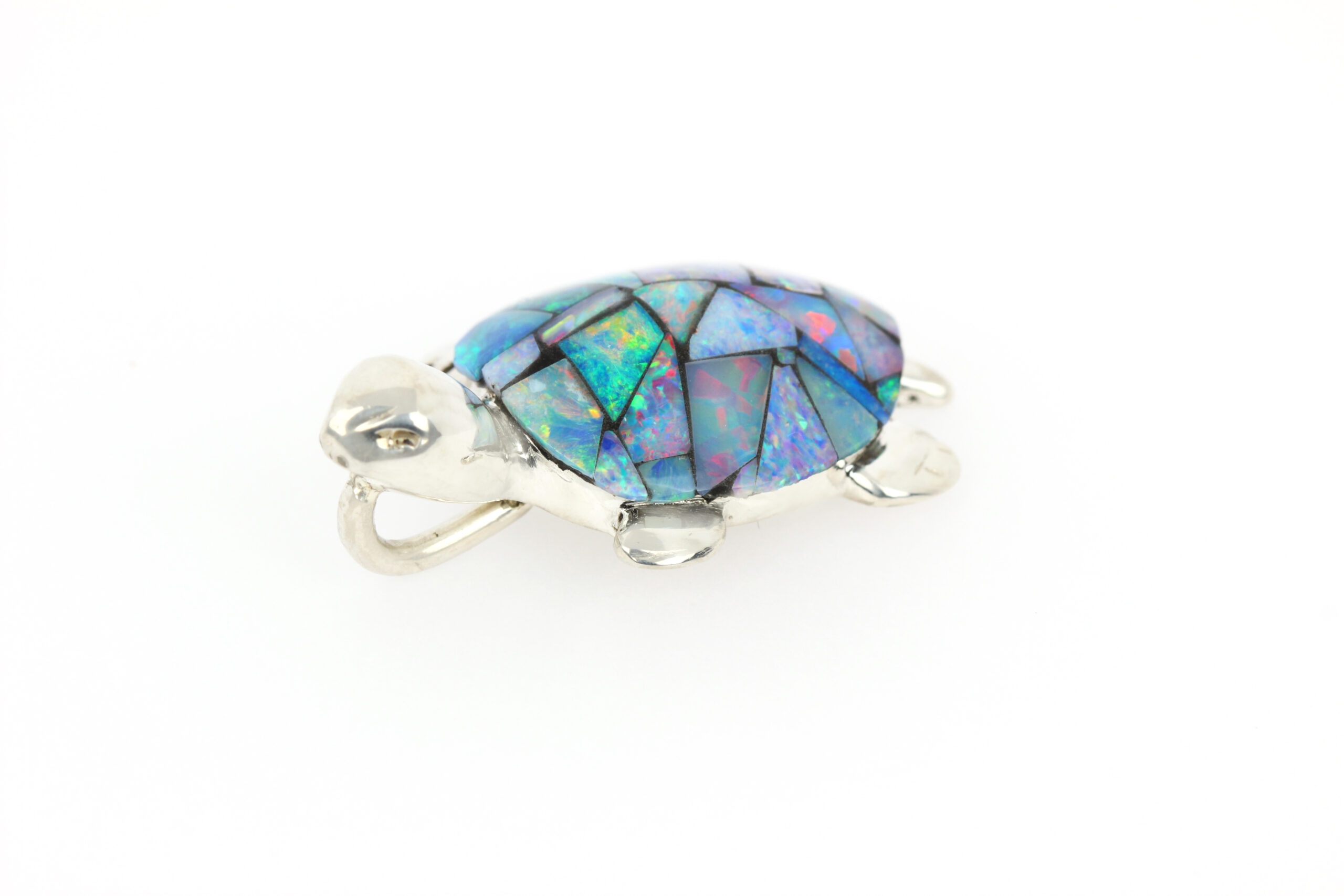
Mosaic Opal
When small pieces of natural opal are put together to fill larger spaces or to make designs, we call it mosaic opal or opal mosaic. Mosaic opal can be made from opal pieces of various shapes and sizes. In the picture shown here, the turtle's shell is made of small chips of natural, Australian opal. This turtle was designed and created at The Opal Man using sterling silver for its body.
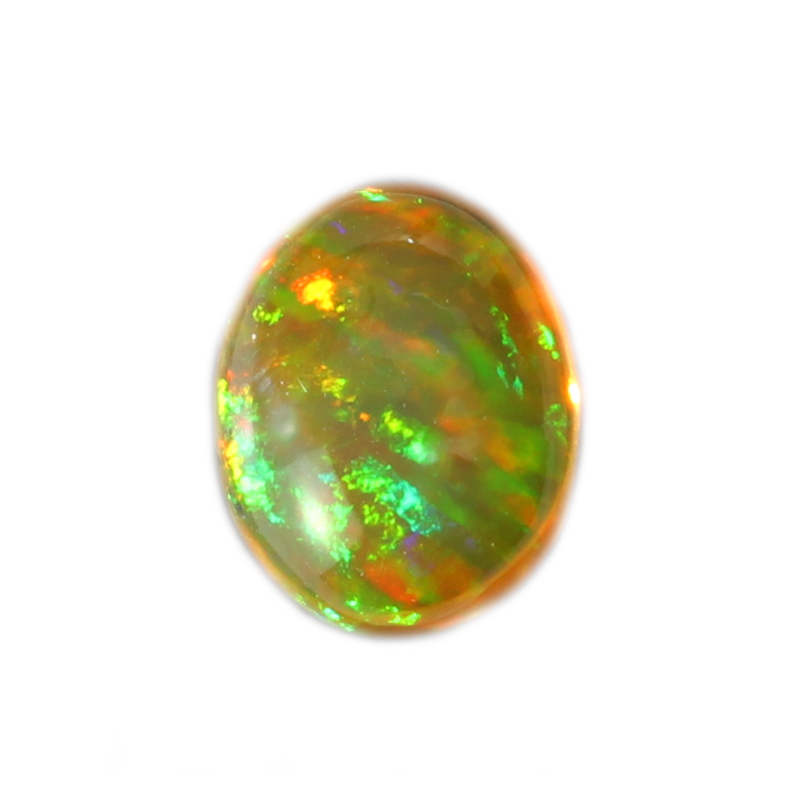
Mexican Opal
Often referred to as fire opal, Mexican opal has a red or red-orange base color with flashes of green and even blue. This type of opal is found in the mountains of central Mexico and has been mined since the late 1800s.
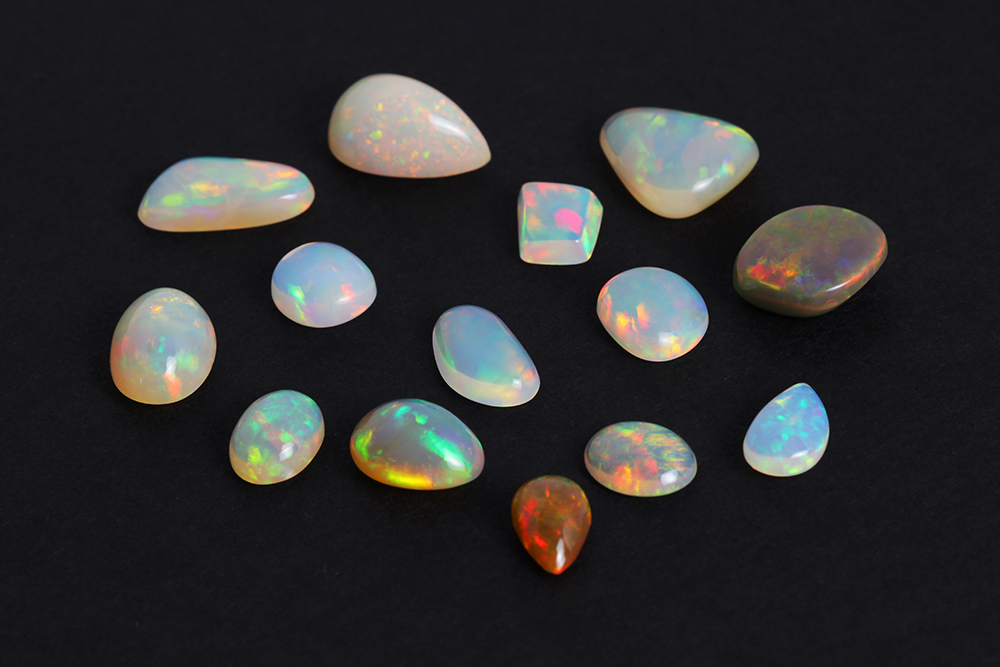
Ethiopian Opal
Ethiopian opal comes in a variety of colors, from dark orange to clear white and everything in between, and often has flashes of green. We here at The Opal Man like to refer the more translucent version of this opal as the Jelly Opal because it has a jelly-like look to it. Most Ethiopian opal is mined in Welo, Ethiopia and these deposits produce hydrophane opals. "Hydrophane" means that the opal is porous and allows liquids to be absorbed into the stone. This absorption, which occurs after the opal is introduced to any liquid, aerosol, or even humidity, will likely change the color of the opal with enough exposure.
